Beverly Gray's Blog: Beverly in Movieland, page 77
June 19, 2018
Long Play’s Journey into Night
 Updated poster;
Updated poster; See below for an original poster remarkable for its trashiness.
That’s one thing about big-name movies: they introduce us to stage actors we normally wouldn’t get a chance to see in action. Most of us know of Jeremy Irons, especially for his Oscar-winning portrayal of Claus von Bulow in 1990’s Reversal of Fortune. He’s also played such varied roles as Alfred in various Batman flicks, Humbert Humbert in the latest incarnation of Lolita, and (as a voice actor) Scar in The Lion King. But Lesley Manville, despite her appearance in several Mike Leigh movies, was completely unknown to me until last year’s Phantom Thread. As Daniel Day-Lewis’s devoted sister and business partner, Cyril, she was one leg of a triangle breathtaking in its complexity. Not for nothing was she honored with an Oscar nomination as Best Supporting Actress.
Recently, I was lucky to see Irons and Manville together on stage in the Bristol Old Vic production of Eugene O’Neill’s Long Day’s Journey into Night. (Funny how Broadway flips over plays imported from England, while the Brits keep re-discovering American theatrical masterpieces. Now that most English actors can do credible American accents—which wasn’t always true in the past—there’s nothing to stop them from reveling in classic American material.) The New York critics weren’t 100% kind to this production, but I was thrilled to witness a play I’d never seen on stage. It’s a powerful piece, closely based on O’Neill’s own family, in which each of the four main characters fights his or her personal demons while simultaneously lashing out against the others. Theatre historians have seen in Long Day’s Journey (which O’Neill did not allow to be presented in his lifetime) a precursor to other famous plays, like Edward Albee’s Who’s Afraid of Virginia Woolf and Tracy Letts’ August: Osage County that dissect vicious family discord.
I’ve always had a thing for Eugene O’Neill, who was America’s first great playwright, and the only one to be awarded a Nobel Prize. The son of an actor famous for collaborations with Edmund Booth and for florid productions of The Count of Monte Cristo, O’Neill started his playwriting career with an emphasis on realism. He won his first of four Pulitzer Prizes in 1920 for Beyond the Horizon, a realistic play mirroring his own experience at sea. Later he went through a period of experimentation, trying out masks, tribal drums, contorting scenery, and characters speaking their thoughts aloud. Fascinated by Greek tragedy, he made this the basis of his Mourning Becomes Electra. Then, late in his life, he went back to realism, but with a tragic overlay.
Groucho Marx makes fun of the interior monologues from Strange Interlude in 1930’s Animal Crackers. Among the O’Neill plays that were made into movies, Anna Christie (starring Greta Garbo) is a standout. Paul Robeson starred in a Hollywood version of The Emperor Jones, O’Neill’s impressionistic tale of a Pullman porter who flees to the West Indies and declares himself a god. The American Film Theatre, which between 1973 and 1975 adapted great American dramas into films, produced a cinematic version of The Iceman Cometh, with Lee Marvin leading an all-star cast. (Denzel Washington recently competed for a Tony Award for his Broadway performance of the starring role.) . And in 1962, Sidney Lumet directed Katharine Hepburn, Ralph Richardson, Jason Robards, and Dean Stockwell in a faithful cinematic rendition of Long Day’s Journey. All four received acting awards at the Cannes Film Festival, and Hepburn nabbed an Oscar nomination as well.
Hepburn was memorable, but Manville gave me a vivid reminder of the girlish charmer that Mary Tyrone started out to be.

Published on June 19, 2018 10:30
June 14, 2018
Earning an Easy A

It’s exciting to think that a contemporary high school student could find relevance in a classic work of literature written centuries ago. But screenwriters, who are generally overeducated for the requirements of their profession, like to mix it up occasionally by turning to their literary heroes for subject matter. Shakespeare’s Romeo and Juliet, that classic story of love and heartbreak, has appeared in all sorts of modern settings. (See Baz Luhrmann’s 1996 Romeo + Juliet, set in Verona Beach, for one of the wildest.) A more comic Shakespearean tale, The Taming of the Shrew, was turned into a 1999 high school romance, 10 Things I Hate About You. Yes, the writers of the latter eventually stopped trying to impose Shakespearean references onto their story, but it was fun while it lasted. And with Heath Ledger and Julia Stiles in the leads, who cared, anyway?
High school movies (the list keeps getting longer all the time) have been popular since the John Hughes days in the 1980s. Maybe that’s because teenagers are much more frequent moviegoers than their elders. And whereas in my era the big life decisions (like whom to fall for and when to first experience sex) came in the college years, high school now seems to be the place for that crucial experimentation. The 1995 high school comedy Clueless, based on Jane Austen’s witty Emma, had much more to do with shopping and matchmaking than with serious hooking up. But in slightly more recent films, the whole idea of teenagers doing the nasty is front and center.
Easy A takes its title and some of its plot from Nathaniel Hawthorne’s 1850 classroom staple, The Scarlet Letter, in which a woman is publicly punished for adultery while her lover’s identity remains hidden. The Hawthorne novel, a shocker in its day, was first filmed by Hollywood back in 1926, when sweet Lillian Gish campaigned to play the leading role of Hester Prynne. In 1995, Roland Joffé attempted a more frank and “modern” version, which was described as “freely adapted” from the original. Its stars were Demi Moore, Gary Oldman, and Robert Duvall, and it won plenty of Razzie awards, including the top prize for “worst remake or sequel.” There’ve been plenty of other attempts too, some of them foreign language versions. But Easy A is, I believe, the first time this story has had a high school setting.
Not that Easy A is about adultery, exactly. Mostly it deals with the power of rumor-mongering and how school kids can’t wait to think the worst of one another. Yes, there’s an off-camera—and highly inappropriate—adulterous encounter that becomes one of the film’s more serious strands. Still, at the center of the action is a virginal but feisty young woman (a mesmerizing Emma Stone) who decides to embrace wholeheartedly the rumor that she’s slept around. Stone’s Olive is a highly original creation, someone both smart and naïve, both good-hearted and self-absorbed. (I suspect she and Saiorse Ronan’s Lady Bird would get along great.) The boys who flock to her are often misfits who don’t want sex so much as a boost to their shaky reputations for machismo. Yes, the film’s view of high school seems right on target.
Easy A is on unsteady ground, aesthetically speaking, because it can’t decide how comedic (or how realistic) it wants to be. Still, I have to put in a plug for Olive’s outrageously outspoken parents, played by Patricia Clarkson and Stanley Tucci. Both hilariously funny, they also help explain how Olive evolved into the most unusual young woman she’s turning out to be.
Published on June 14, 2018 10:30
June 11, 2018
Paul Simon and the Sounds of Music
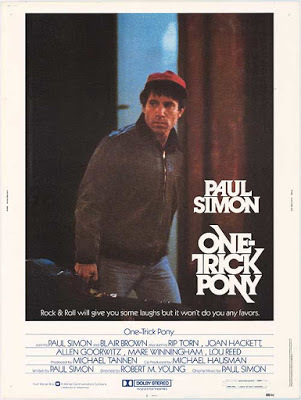
No one who loves The Graduate will forget about the contribution of Paul Simon -- and the poignant Simon & Garfunkel vocal blend -- to the film’s score. In 1967, when Mike Nichols was directing the film, he found himself playing his Simon & Garfunkel album (a gift from his younger brother) over and over as he prepared for a day on the set. Feeling that the pair’s sweet, melancholic harmonies reflected the personality of The Graduate’s Benjamin Braddock, Nichols decided to hire them to write and perform three songs that would be incorporated into the movie. They were then near the height of their fame among the college set, and songwriter Paul Simon lacked time and inspiration to craft three brand-new pieces. He completed only one, “Punky’s Dilemma,” which was supposed to accompany Benjamin floating in his parents’ swimming pool. Nichols wasn’t impressed. He did like a little ditty with which Simon was fiddling: it started out “Here’s to you, Mrs. Roosevelt,” and didn’t go much further. Mrs. Roosevelt quickly became Mrs. Robinson, and that catchy snatch of music (not yet a complete song) was incorporated into Ben’s driving scenes near the movie’s end.
As the editing of the film progressed, other Simon & Garfunkel hits, notably The Sound of Silence, were used as temp tracks. Eventually Nichols and producer Larry Turman decided to keep them in the finished film. This decision didn’t sit well with financier Joseph E. Levine, who was convinced young audiences would laugh at the use of these “old” songs. Instead, moviegoers embraced the familiar tunes, and the idea of choosing music with a built-in emotional resonance for the audience has become a standard filmmaking tactic.
In the wake of The Graduate’s huge success, both Simon and Garfunkel found themselves involved in the movie industry. Robert Hilburn’s new biography, Paul Simon: The Life , recounts how both men were originally cast in Mike Nichols’ follow-up film, a screen adaptation of Joseph Heller’s novel about the absurdity of war, Catch-22. Eventually, Simon’s small part was eliminated, but Garfunkel appeared in the featured role of the innocent young soldier, Nately. The following year, he surprised his musical partner, Simon, by accepting a major role as Jack Nicholson’s best buddy in Nichols’ Carnal Knowledge. According to Hilburn, Garfunkel’s long absences to shoot movies were part of the strain that broke up the Simon & Garfunkel partnership.
Simon, always a restless seeker after new forms of artistry, eventually decided that he too wanted to make movies. In 1980, he set about to explore on film the challenges faced by an ageing rock star working to put out a new album while struggling to save his marriage. He wrote the script and the score, and then – after interviewing actors like Richard Dreyfuss – decided to be true to the reality of a singer’s world by playing the leading role himself. Hilburn quotes him as saying, “I didn’t want to do a film about music that I couldn’t believe in. That’s the biggest problem I found with other [rock-related] films. They seemed false. Take [the 1976 version of] A Star is Born. . . . You don’t really believe Barbra Streisand is a rock star. You always know it’s really Barbra Streisand..” But Simon, despite devoting himself to acting lessons, was not an actor. And the film sank like a stone.
So did Simon’s attempt at writing an ambitious Broadway musical, The Capeman., despite its distinctive score. Still, Hilburn’s book reminds us that as a songwriter – and someone who has introduced music fans to the riches of other cultures – Simon remains a treasure.
Published on June 11, 2018 12:36
June 8, 2018
Tom Wolfe and Philip Roth: New York Stories
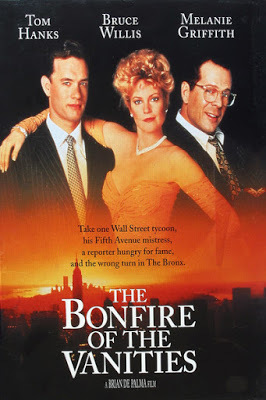
My presence in New York City seems to be hazardous to authors. While I was working in Manhattan recently, the nation and the world lost two of its literary best. Tom Wolfe, the man responsible for what’s been called the New Journalism, died in New York City on May 14, at the age of 88. Eight days later, novelist Philip Roth passed away in Manhattan at age 85. Coincidence? I suppose so.
Tom Wolfe, not to be confused with the Thomas Wolfe who wrote Look Homeward, Angel in 1929, was like him a Southerner by birth. Born in Richmond, Virginia, he gravitated toward the Big Apple, from whence he chronicled social cliques and oddities in such works as Radical Chic and The Kandy-Colored Tangerine-Flake Streamline Baby. A flamboyant presence in his white suits, he himself became as famous as his writing. He showed up in countless documentaries, and was even featured as a version of himself on an episode of The Cosby Show called “Superstar.” He also dabbled a bit in filmmaking. In 1984 The Right Stuff, the Philip Kaufman film based on Wolfe’s lively non-fiction chronicle of the original Mercury 7 astronauts, won four Oscars and was nominated for four more, including Best Picture.
Alas, Wolfe’s other major Hollywood outing was not so successful. Wolfe published in 1987 The Bonfire of the Vanities, an outrageous satire about greed, racism, politics, and other deadly sins in contemporary New York City. This best-selling novel was purchased by Warner Bros. Then all hell broke loose. The original director, Mike Nichols, was replaced by Brian De Palma. Casting controversies led to key plot changes, with Tom Hanks’ character rendered more sympathetic and Bruce Willis cast in a role that should have gone to an Englishman. A Jewish judge from the novel was turned into Morgan Freeman, as the studio sought to mute any criticism of the film’s racial politics. Bad artistic decisions were rife, and the film became such a critical and financial flop that in 1991 Wall Street Journalfilm critic Julie Salamon put forth a tell-all book called The Devil’s Candy: The Bonfire of the Vanities Goes to Hollywood.
Philip Roth’s Hollywood career had fewer highs and fewer lows. Roth started out as a chronicler of Jewish life in Newark, penning acerbic tales of suburban culture clashes in a memorable little 1959 collection called Goodbye, Columbus, which won the National Book Award for fiction. A decade later, the title story was made into a popular film, starring Richard Benjamin and a star-in-the-making, Ali MacGraw. Highly popular at the box office, Goodbye, Columbus won a few Golden Globes, and its script was Oscar-nominated. In 1972, Roth became notorious as the author of Portnoy’s Complaint, with its kinky blend of ethnicity and sex (especially masturbation humor). Needless to say, the translation of Roth’s offbeat sensibilities to the screen was a challenge. Richard Benjamin again played the apparent Roth surrogate, with Lee Grant as his monstrous Jewish mother. Both critics and audiences were appalled, and Roth steered clear of Hollywood for some three decades.
Over the years, Roth’s fiction has become more solemn and less sexy. In 2003, his The Human Stain was adapted into a serious film starring Nicole Kidman and Anthony Hopkins. In 2016, actor Ewan McGregor made his directorial debut with Roth’s American Pastoral, a painful tale of family turmoil amid the radical social impulses of the Sixties. As in the case with The Human Stain, the film version made few ripples. Roth was often mentioned as a candidate for the Nobel Prize for literature. It’s too late for that now.
Published on June 08, 2018 11:21
June 5, 2018
“The Graduate” Rides Again at the Theatre at Ace Hotel
 In 1927, Americans loved movies and radio. Last Saturday night, in an L.A. movie palace built in 1927, those two forms of entertainment were gloriously combined. Public Radio Station KPCC-FM (based in Pasadena, California) likes to amuse and enlighten its supporters at live events. Long-time AirTalk host Larry Mantle, a serious movie enthusiast, has recently been staging screenings of classic films with SoCal settings. This past weekend, just in time for the end of the school year, he offered 1967’s The Graduate. Afterwards, I was honored to appear as a panelist, along with veteran film critic Peter Rainer and two of the film’s invaluable behind-the-scenes contributors, producer Lawrence Turman and screenwriter Buck Henry. (As all fans of The Graduate know, Buck is also featured as a hotel desk clerk with a carnation in his buttonhole and the faintest of sneers on his face.)
In 1927, Americans loved movies and radio. Last Saturday night, in an L.A. movie palace built in 1927, those two forms of entertainment were gloriously combined. Public Radio Station KPCC-FM (based in Pasadena, California) likes to amuse and enlighten its supporters at live events. Long-time AirTalk host Larry Mantle, a serious movie enthusiast, has recently been staging screenings of classic films with SoCal settings. This past weekend, just in time for the end of the school year, he offered 1967’s The Graduate. Afterwards, I was honored to appear as a panelist, along with veteran film critic Peter Rainer and two of the film’s invaluable behind-the-scenes contributors, producer Lawrence Turman and screenwriter Buck Henry. (As all fans of The Graduate know, Buck is also featured as a hotel desk clerk with a carnation in his buttonhole and the faintest of sneers on his face.) For me, just walking under the theatre’s old-fashioned marquee was a treat. The United Artists, with 1600 seats, was not the biggest of the movie palaces that once lined Broadway in Downtown Los Angeles. But in its day it may have been the most elegant. This theatre, the pride of the United Artists cinema chain, was built to showcase the output of the film studio founded in 1919 by Mary Pickford, Douglas Fairbanks, D.W. Griffith, and Charlie Chaplin. Pickford, a savvy businesswoman as well as a matchless movie star, oversaw its construction with tender loving care. Its flamboyant style is Spanish Gothic, patterned after the cathedral in Segovia, Spain. While other opulent movie houses grew shabby over time, the UA was saved by coming into the hands of a megachurch that strove to keep it in pristine condition. Since 2014, it has been open for public events, as part of the über-hip Ace Hotel.
At Saturday night’s screening, some 1100 moviegoers laughed and cheered, then listened intently to what we panelists had to say. Producer Larry Turman explained how he found Charles Webb’s novel, put up his own money to option it, and got the bright idea of inviting Mike Nichols to direct his first movie. Buck Henry, physically weakened by a stroke but still game and funny, reminisced about working on the screenplay with Nichols, after an earlier writer had come and gone. Larry and Buck agreed that as young filmmakers they strongly identified with The Graduate’s leading man, though of course neither had ever quite found himself in Benjamin Braddock’s unusual romantic predicament.
It fell to Peter Rainer and me to put The Graduate into historic context. Drawing from my book, Seduced by Mrs. Robinson, as well as my memories of seeing this film while a college senior, I pointed out that The Graduate—though never touching on such hot-button 1967 issues as the Civil Rights Movement and the Vietnam War—was hailed in that era for grasping the anxiety of being young at a time of enormous social upheaval. I also chimed in on a discussion of why the casting of the short, dark, “ethnic” Dustin Hoffman rocked Hollywood. Peter introduced the legendary story of Robert Redford not getting the role after Mike Nichols asked him, “When was the last time you struck out with a girl?” (Supposedly, the handsome young Redford answered, genuinely baffled, “What do you mean?”) Part of the fun was hearing Larry Turman set the record straight, pointing out that he was the one who convinced Nichols that Redford was just too suave to be funny in the part.
All of us panelists are much older now than we were in 1967, but happily The Graduate hasn’t aged a bit.
Heartfelt thanks to Larry Mantle, the KPCC staff, and my fellow panelists for a great evening of movie magic.
 The Theatre at Ace Hotel in all its glory
The Theatre at Ace Hotel in all its glory
Published on June 05, 2018 13:12
June 1, 2018
Wishfully Thinking About Carrie Fisher
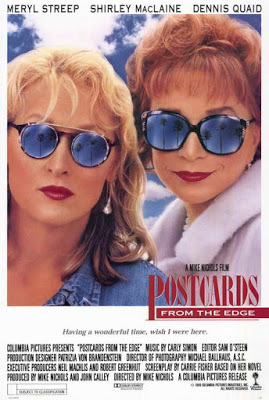
I never saw Carrie Fisher’s solo show, Wishful Drinking, when it played on a local stage. Now, it’s too late, given Fisher’s untimely death in 2016. But a recent JetBlue trip allowed me to view HBO’s filmed version of her show, which was an Emmy nominee in 2011. It proved the perfect thing to watch while suspended in mid-air—much like Fisher herself—between L.A. and New York City,
Not everyone may know that Carrie Fisher was one of Hollywood’s best-regarded script doctors. Her wit and her off-kilter view of the world more than make up for a life that could come off as soap opera. She begins, inevitably, with the story of her parents’ marriage. (I’m quoting from notes scribbled down during my flight, so the zingers may not be absolutely exact.) Perky Debbie Reynolds and suave crooner Eddie Fisher—both of whom were alive when this show aired—were often called America’s Sweethearts. In 1956, the year Carrie was born, they actually starred together in a musical about a young couple and a baby: Bundle of Joy. Debbie and Eddie had close friends in Hollywood, producer Mike Todd and his wife, Elizabeth Taylor. The friendship was so strong that the Fishers’ second child was named Todd, in Mike’s honor. In explaining this, Carrie references the Jewish tradition of her paternal ancestors, who felt that naming a baby after a living person is bad luck. The Fishers may have laughed this off as old-world superstition, but in 1958 Mike Todd died in the crash of a private plane. Eddie quickly took it upon himself to console the beautiful widow. Here’s how Carrie wryly puts it: “He flew to her side. Gradually he made his way to her front.”
The Fisher/Reynolds divorce, which was prime fodder for the movie mags of the day, led to multiple re-marriages on both sides. Fisher’s last of five wives was Asian, and Carrie notes, “My father has had so many facelifts he looks Chinese himself.” (She also theorizes that, as a short, Jewish singer, he inspired her own brief marriage to Paul Simon.) Carrie’s mother gets off no more easily. Noting that Debbie Reynolds’ lineage is Texan, but that celebrity gives her a certain aristocratic sheen, Carrie labels her mom “blue-blooded poor white trash.” Certainly Debbie had some unconventional ideas. When she married her third husband, but realized she herself was too old for child-bearing, she had the bright idea that Carrie (unmarried in her late 20s) should be impregnated with his sperm, so that his genetic material would not go to waste.
Carrie Fisher of course made her own mark on Hollywood by playing Princess Leia (she of the Cinnabon hair-do) in the original Star Wars. She’s hilarious in discussing her first impression of this project: “It sounded like a fight between my original parents.” She also expresses her chagrin that George Lucas owns her likeness, which has even shown up as a Leia-headed Pez dispenser. She has been hailed for her acid-dipped pen (see her skewering of a slightly fictionalized version of her own upbringing in Postcards from the Edge, for which she wrote both the source novel and the screenplay). But, given her medical issues, which included bipolar disorder and an addictive personality, it’s remarkable she lived as long and as well as she did. In Wishful Drinking she explains that survivors like her “have to keep getting into trouble to show off your gifts.”
When I finished watching Wishful Drinking, I turned to Singin’ in the Rain, featuring Carrie’s mom at her most adorable. Who knew what she would spawn?
Published on June 01, 2018 12:09
May 30, 2018
Weddings Under Starry Skies
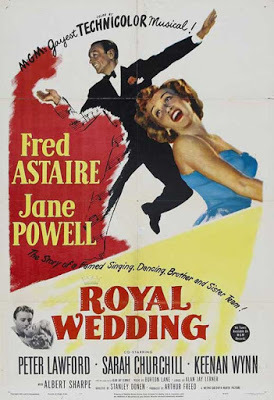
I’m newly back from a large and festive wedding. No, I wasn’t at Windsor Castle, watching Prince Harry exchange vows with his American bride. I was much closer to home, in an enchanted grove in San Diego, rooting for two lovely young people who -- in front of family and friends – were officially becoming a couple.
Harry and Meghan certainly didn’t lack for onlookers. For one thing, the eyes of the world were on them, via television and the global news media. And their ceremony was also witnessed in person by scores of VIPs, some of them heirs to thrones, others royalty of a far different sort. I did a small informal count of celebrities in attendance. A few were from the sports world: Serena Williams, David Beckham (of course, the latter is married to a former Spice Girl.) But many of the big names in attendance have a Hollywood connection. No surprise that the guest list included such TV folk as Gabriel Macht and Gina Torres, both of whom are featured on bride Meghan Markle’s former TV series, Suits. In addition, there were a number of British-born performers: James Corden, Idris Elba, Carey Mulligan, Joss Stone. And, inevitably, George and Amal Clooney, whose showbiz mystique (him) and international credentials (her) apparently make them welcome guests everywhere. And let’s not forget the presence of her royal highness, Oprah Winfrey.
In comparing Oprah to British royalty, I’m being only half facetious. Oprah may spring from humble roots, but she’s a monarch nonetheless: a queen of daytime TV, movie drama, print media, and everything else she touches. (The book publishing industry counts on her to make best sellers when she announces her picks for Oprah’s Book Club.) Like Great Britain’s Elizabeth II, Oprah can get by with a single name, and she doesn’t even need a roman numeral. After a particularly memorable Oprah speech at the Golden Globe awards, there was serious public chatter about her becoming the next U.S. president. But I think it would be more fitting to give her a throne.
The irony, of course, is that the American republic has always resisted establishing a monarchy. George Washington had to fight hard against those who wanted to proclaim him the new nation’s king. Still, Americans are entranced by royals, whether hereditary or elected. We dote on royal weddings, perhaps even more than the Brits who have to pay for them (see how one of the biggest turned into a Fred Astaire musical). And we like best those politicians and their spouses – the Kennedys, the Reagans – who seem to bring an aristocratic glamour into our country’s highest office. But such majesty is often in short supply in the White House, and most Americans look to Hollywood to fulfill their need for beauty and panache. The early movie moguls knew this well, which is why they worked so hard to find likely candidates and supply them with star mystique. In the old days, stars like Joan Crawford were carefully tutored, expensively dressed, lovingly photographed, and shielded from anything that might detract from their pristine images.
Today we think we want a more honest approach. We’re used to seeing photos of superstars in their grubbies (or in nothing at all): they hold onto the sometimes-clunky names they were born with, and seem to delight in behavior that’s outside the boundaries of good taste. (Roseanne Barr, I’m talking to you.) Still, I think we need celebrity culture to add romance and excitement to our workaday lives. The union of the English prince and the American TV star had both. Long may they thrive.
This post is dedicated to Sarah Hoffman and Taylor Lucas, with best wishes for much happily-ever-after.
Published on May 30, 2018 10:41
May 25, 2018
War is Hell: a Memorial Day Memory

The upcoming Memorial Day weekend seems an apt time to look back on my years as story editor to Roger Corman at Concorde-New Horizons Pictures. In that era, circa 1986 through 1994. many of our action thrillers were set among the jungles and rice paddies of Vietnam. Some of our most prolific screenwriters were Vietnam War vets who could write accurately about military weapons and reproduce the slang of grunts in the field. I myself had no similar war experience to call upon when I was tasked with finishing up the script of a Concorde writer who’d dropped the ball on one of our projects. But I did my best, and Beyond the Call of Duty became one of my six Concorde screenwriting credits.
Roger Corman’s Vietnam movies were all shot in the Philippines, where Roger’s buddy -- the legendary Cirio Santiago -- had access to weaponry, jungle foliage, and legions of actual Filipino soldiers who were only too happy to put on Vietnamese uniforms and die dramatically for the cameras. Authenticity was never more than the vaguest of goals. But my writing colleague Frank McAdams is capable of much better. Frank, after thirteen months in Vietnam, entered UCLA Film School. He wrote Stagecoach Bravo, based on his own Marine Corps experience, as his thesis film, and it went on to win the prestigious Samuel Goldwyn Screenwriting Competition. Later, after years of teaching screenwriting, he published The American War Film: History and Hollywood. More recently the University Press of Kansas put forth his Vietnam Rough Riders: A Convoy Commander’s Memoir (2013).
Some of the stories told in Frank’s memoir were already familiar to me from conversations we had had over lunch. There was, for instance, the major who took it upon himself to withhold from his troops those movies (like The Graduate and Dr. Strangelove) he considered offensively countercultural. But the episode that really stood out for me in Frank’s book began when, while in the process of writing a letter, he heard a commotion coming from the neighboring hooch (or canvas-walled living quarter). Peeking inside, he discovered a young Marine holding an M-16 rifle on eight U.S. Army officers and South Vietnamese Rangers. Hopped up on booze or drugs (or both), this Marine was mourning the deaths of two buddies by threatening the lives of eight men who were on his own side in the conflict. His weapon was set on full-automatic, and bloodshed seemed inevitable until Frank stepped in and managed to disarm him. For this gutsy act Frank received the Army-Marine Corps Medal. He continues to marvel that, in a few seconds’ time, he managed to prevent the sudden deaths of eight comrades-in-arms.
This dramatic real-life episode came back to me when I heard about the death of an actor named R. Lee Ermey. Ermey, who died this past April at age 74, was an actual Marine Corps drill instructor during the Vietnam era. After moving into acting, he found fame as the foul-mouthed gunnery sergeant in the opening scenes of Stanley Kubrick’s 1987 military drama, Full Metal Jacket. The foul but funny language Ermey’s character uses to intimidate new recruits was drawn from his own Marine Corps experience. It’s a raw and powerful way to open a film, especially when it culminates in one of the newbies suddenly turning on this man who has never let up on him. The resulting bloodshed slams home Kubrick’s war-is-hell message. Like Frank’s story of the young Marine, it reminds us that in wartime there’s death around every corner, and it sometimes comes from places we don’t expect.
Published on May 25, 2018 09:24
May 22, 2018
A Visit to a Mean and Frozen SpongeBob

June 10 is date of 2018’s Tony Awards ceremony, Broadway’s answer to the Oscars. As usual Hollywood will doubtless gets its due. Such familiar TV and movie folks as Amy Schumer, Andrew Garfield, Tony Shalhoub, Michael Cera, and Denzel Washington (who’s earned raves for a revival of Eugene O’Neill’s classic The Iceman Cometh) all earned acting nominations. But I was especially struck by the entries in the Best Musical category. Though the musical revivals being honored this year (My Fair Lady, Carousel, Once On This Island) all began life on a stage, every single new musical on the 2018 list of nominees is an adaptation of a film property. It feels as though no one dares to launch a musical these days unless its basic premise and characters have been vetted by movie audiences. Given the cost of putting on a Broadway musical, I guess that makes some sort of sense. But for those who love discovering new musical stories, it’s disheartening that originality seems to be dead.
So what are these candidates for Best New Musical? Inevitably, there’s a stage adaptation of the Disney mega-hit, Frozen, with writer/lyricists Kristin Anderson-Lopez and Robert Lopez enhancing their Oscar-winning film score (“Let it Go”) with additional songs. In recent years, Disney has added to its coffers by turning its film successes into Broadway extravaganzas (see The Lion King, Beauty and the Beast, Aladdin, etc. etc.), and so a stage version of Frozen—a story beloved by little girls everywhere—was an easy sell. Surprisingly, Frozen will not be a big winner on Tony night. It is only nominated in three categories.
A very different kind of film adaptation is up for 11 awards. This is The Band’s Visit, a stage adaptation of a small, charming Israeli film about an Egyptian troupe of amateur musicians who find themselves stuck in a small desert town in the Negev, reliant on the hospitality of Israeli locals. The good-hearted film hints at the power of music, which gives its transformation into a stage musical a kind of artistic logic. Serious Broadway pros are involved on the production end, and critics feel this is a class act – and the show to beat.
But wait! Two other new musicals have racked up 12 nominations apiece. Decidedly NOT good-hearted is Tina Fey’s stage adaptation of her own 2004 hit, Mean Girls. I’m told the musical, like the film, has a wonderful sardonic edge, as well as a point to make: both are based on Fey’s reading of a genuine how-to book, Rosalind Wiseman’s Queen Bees and Wannabes: Helping Your Daughter Survive Cliques, Gossip, Boys, and the New Realities of Girl World. Like most things Fey touches, this show is golden, and could well take home the top prize. (Its lyricist, Neil Benjamin, was responsible for both music and lyrics on what might be the epitome of the movie-to-Broadway musical, the perky and forgettable Legally Blonde.)
And, yes, there’s SpongeBob SquarePants, a big-budget musical that borrows characters and settings from the Nickelodeon cartoon series, which itself became a 2015 film. The always acerbic L.A. Times drama critic calls SpongeBob a play “spun from pop cultural pabulum.” And there’s no question that a show about the happy denizens of Bikini Bottom is going to be bright and cheerful, instead of intellectually challenging, Still, it obviously has its partisans.
But as someone with a close relative who hopes to make his career writing musical theatre, I trust there’s still room for projects unconnected to movies past and present. Here’s hoping audiences can still be surprised and delighted by a brand-new stage experience.

Published on May 22, 2018 15:43
May 18, 2018
Of Mail and the Male Gaze (A Post-Mothers Day Post)

The U.S. Postal Service, looking for ways to convince us to buy stamps, has of late become focused on American popular culture. Flipping through a recent catalogue, I find the ever-popular Love stamps (suitable for wedding invitations and the like), as well as stamps celebrating American heroes, natural wonders, and holidays. I felt a pang upon spotting a stamp (first issued on January 30 of this year) dedicated to the great Lena Horne. Not only was she (as the catalogue puts it) “a trailblazer in Hollywood for women of color,” but she was also a sultry, sexy, powerful singer whom my parents adored. As they frequently reminded me, her musical numbers were featured in many a big-studio musical (like Ziegfeld Follies and Till the Clouds Roll By) in such a way that they could easily be snipped out when the films were shown in the Deep South. But Horne got an actual role as the femme fatale in one of my parents’ movie favorites: Vincente Minnelli’s all-black musical from 1943, Cabin in the Sky.
To be featured on a U.S. postage stamp, you need to be dead. But it’s also OK if you were never actually alive. The category of fictional characters on postage stamps now includes an assortment of Disney villains. Yes, villains! Here’s how the catalogue explains their presence: “The Disney villains were a little scary when we first met them in the movies, but we learned that they couldn’t hurt the good guys. So now, children can enjoy sharing them with friends . . . .” Aha! It’s a ploy to convince kids to pen letters (and also send the USPS’s Disney-themed-postcards) instead of just texting. Far be it from me to discourage little ones from mailing off letters to their grandmas. In an era when letter-writing has become a lost art, I’m all in favor of a gentle nudge in the direction of the mailbox.
In studying my sheet of Disney Villains stamps, I found myself thinking back to classic films I still remember fondly: Sleeping Beauty, Cinderella, Peter Pan, and Pinocchio. And of course there was Snow White, the landmark 1937 film that was the world’s very first full-length animated feature. Naturally, each of these movies boasts an evil character who’s part of the postal service stamp array. The other villains on my sheet come from more recent Disney: The Little Mermaid, Beauty and the Beast, The Lion King. But here’s the thing: of the ten Disney Villains represented: fully six are female. And of these six, most are mother figures Like the beautiful but deadly stepmother in Snow White, as well as the conniving stepmother who favors her own daughters over the heroine in Cinderella. I’ve read Bruno Bettelheim and others who’ve commented on the secret meanings of fairy tales, so I know it makes sense for children to see their own moms as sometimes morphing into wicked witches when their tempers are aroused. Still, it’s dismaying that there are so many evil women out there in the world of animation. Count them: Malificent, the Mistress of All Evil who dooms the Sleeping Beauty. Cruella de Vil, who makes puppy dogs into coats in The Hundred and One Dalmatians. Ursula the Sea Witch who tricks Ariel into giving up her tail in The Little Mermaid.
I guess all this feminine evil is an effective counterpart to the sticky-sweet Disney princesses. But in the #MeToo era, I’m noticing there’s only one potentially lecherous Disney male, the chauvinistic Gaston from Beauty and the Beast. Otherwise, leave it to Hollywood to make the women the bad guys.
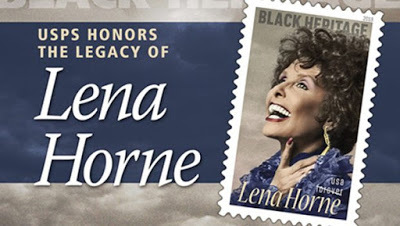
Published on May 18, 2018 15:24
Beverly in Movieland
I write twice weekly, covering topics relating to movies, moviemaking, and growing up Hollywood-adjacent. I believe that movies can change lives, and I'm always happy to hear from readers who'd like t
I write twice weekly, covering topics relating to movies, moviemaking, and growing up Hollywood-adjacent. I believe that movies can change lives, and I'm always happy to hear from readers who'd like to discuss that point.
...more
- Beverly Gray's profile
- 10 followers



